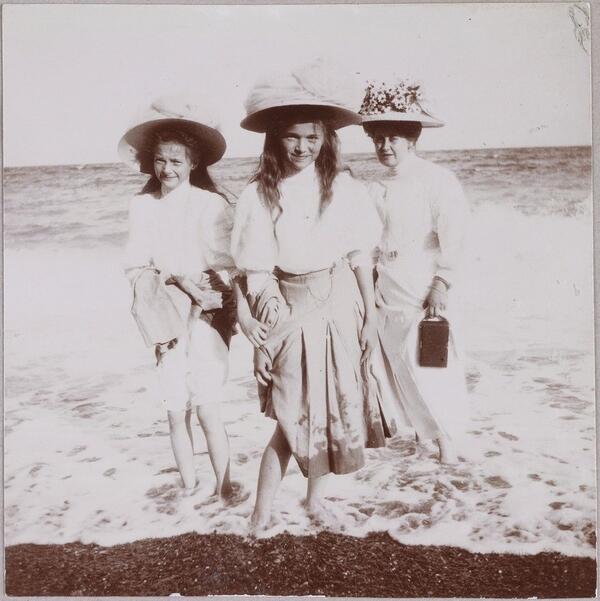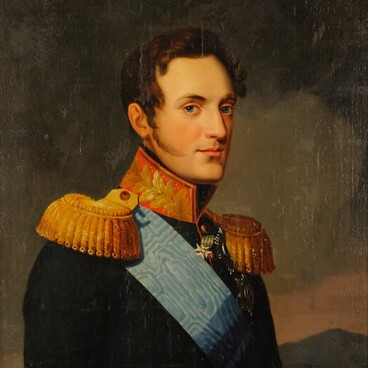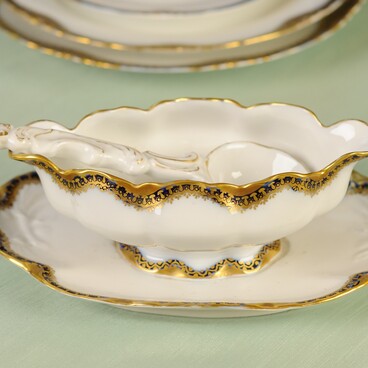This fragment of a larger collage shows six official shoulder-length portraits of members of the House of Romanov. It is an oleograph made by an unknown artist in early 1900s.
Top row from left to right:
• Empress Dowager Maria Feodorovna (1847-1928), mother of Nicholas II and widow of Alexander III;
• Emperor Nicholas II (1868-1918), last Emperor of Russia;
• Empress Consort Alexandra Feodorovna (1872-1918), spouse of Nicholas II.
Bottom row from left to right:
• Grand Duke Vladimir Alexandrovich (1847-1909), younger brother of Emperor Alexander III;
• Emperor Alexander III (1845-1894), the owner of Massandra Palace, shown wearing a dress coat with medals and aiguillettes;
• Grand Duke Alexis Alexandrovich (1850-1908), younger brother of Emperor Alexander III.
The right side of the oleograph is adorned with a stylized cane branch. Each portrait bears a name written in French below.
Nicholas II and his family spent the spring of 1912 and the end of summer and fall of 1913 in Crimea. They mostly stayed in the Livadia palace, spending their time resting, taking strolls or bathing in the sea. Crimea was a sort of solace for the Imperial family, a way of escaping endless concerns of the state. It was a place for them to hide from public attention and devote some time to each other.
Top row from left to right:
• Empress Dowager Maria Feodorovna (1847-1928), mother of Nicholas II and widow of Alexander III;
• Emperor Nicholas II (1868-1918), last Emperor of Russia;
• Empress Consort Alexandra Feodorovna (1872-1918), spouse of Nicholas II.
Bottom row from left to right:
• Grand Duke Vladimir Alexandrovich (1847-1909), younger brother of Emperor Alexander III;
• Emperor Alexander III (1845-1894), the owner of Massandra Palace, shown wearing a dress coat with medals and aiguillettes;
• Grand Duke Alexis Alexandrovich (1850-1908), younger brother of Emperor Alexander III.
The right side of the oleograph is adorned with a stylized cane branch. Each portrait bears a name written in French below.
Nicholas II and his family spent the spring of 1912 and the end of summer and fall of 1913 in Crimea. They mostly stayed in the Livadia palace, spending their time resting, taking strolls or bathing in the sea. Crimea was a sort of solace for the Imperial family, a way of escaping endless concerns of the state. It was a place for them to hide from public attention and devote some time to each other.





